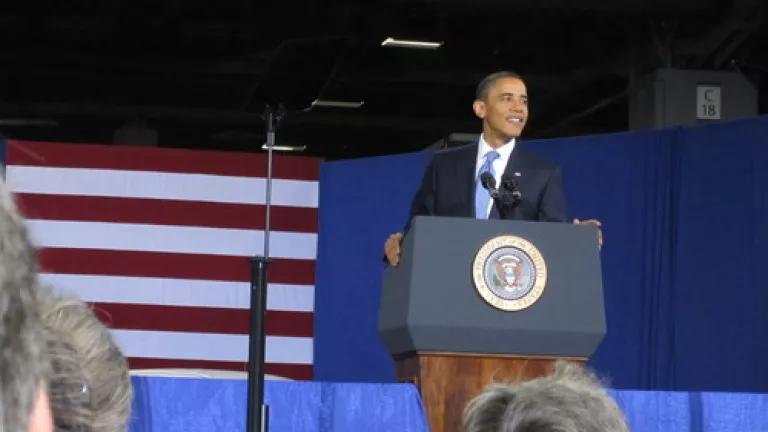Improved Standards for Cars Will Cut Oil Dependence and Pollution while Saving Consumers Billions at the Gas Pump

Tomorrow, President Obama is expected to announce a plan to raise the average fuel economy of new cars, SUVs, minivans and pickups to the equivalent of 54.5 miles per gallon (mpg) by 2025. The new vehicle standards, set to be finalized next summer, will give consumers more choices of clean, fuel-efficient models leading to dramatically less carbon pollution and gasoline consumption.
The new standards apply to model years 2017 to 2025 and extend the light-duty vehicle National Program that currently ramps up fuel economy to 34.1 mpg and reduces carbon pollution to 250 gCO2-equivalent per mile (gCO2e/mi) by 2016. Today’s new cars and light trucks average about 28.3 mpg and 314 gCO2e/mi in the EPA standards test. Under the Administration’s plan, the 54.5 mpg target is equal to an emissions level of about 163 gCO2e/mi, and achieving the target will result in a 48% reduction in carbon pollution and about a 43% reduction in fuel consumption compared to today’s vehicles.
For consumers, the more efficient vehicles mean less money is spent on gasoline. Drivers can expect to save over $3,000 over the life of the vehicle, even when considering the added cost of the cleaner, more fuel-efficient technologies. New fuel savings will pay for the added technologies in about 4 years.
Nationally, savings from fewer trips to the gas pump under the new standards could total over $80B annually by 2030. Instead of padding the profits of oil companies or propping up petro-dictators overseas, that money could be invested in the U.S. economy, driving growth in jobs and prosperity. A recent report conducted by UAW, NRDC and the Center for American Progress showed that reaching 40 mpg by 2020, in line with the standards announced today, could create 150,000 domestic jobs.
The new standards are a good for our security and environment. Based on analysis conducted jointly with the Union of Concerned Scientists, we estimate that by 2030, the standards will cut U.S. oil consumption by as much as 1.5 million barrels per day, which is equivalent to U.S. imports from Saudi Arabia and Iraq in 2010. The standards will also reduce dangerous carbon pollution by as much as 280 million metric tons annually by 2030, equivalent to shutting down 72 coal-fired power plants.
Reaching 54.5 mpg by 2025 is a strong step forward for the U.S. economy and security and for the planet. More work lies ahead, however. The Administration and State of California must work together to convert the vision into robust rules, rules that avoid large compliance loopholes that could significantly reduce the potential savings. The U.S. has a great opportunity and the President is putting us on the right path.

